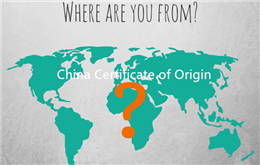What is a CO?
The Certificate of Origin (CO) is used to prove that the place of birth or location of manufacture of the goods, functioned as the basis for the customs country's tax rate. Just put it, it is the "economic nationality" of products entering into an importing country.

A CO, a valid certificate for the transfer of goods, claim compensation, customs clearance acceptance, and customs tariff levy, is a certifying document issued by the government at the request of the importer.
What are the Functions of the CO?
First, determine the tariff treatment of products and improve the market competitiveness of the essential tools.
Most countries in the world implement different tax rates for goods imported from different countries, which means tariffs treatment determined by the state of origin of the products.
If the importer and exporter’s states have a tariff agreement in between as the AGREED CUSTOMS RATE or stipulate MOST FAVORED NATION CLAUSE, the buyer often require the seller to provide a sufficient CO to prove the origin of the imported goods to enjoy the equal tax treatment.
Second, prove the inherent quality of the product or the basis of the settlement.
In international trade, the CO also plays a role in improving the competitiveness of products. For example, silk that holds a China CO in the global market is better than the silk that contains the CO in other countries that do not produce silk. Also, the CO is also a necessary document for the transfer and settlement of both parties. If the buyer is applying for a letter of credit (L/C), it is often required to provide the CO to ensure its interests. The bank also often take CO as an essential document for the payment of the L/C.
Third, work as the basis of trade statistics.
The customs are responsible for the statistics data of import and export goods, and the CO is a vital basis for the statistics of imported goods.
What are the Contents of a CO?
1.
Certificate No.
This column must not be left blank. Otherwise, the certificate is invalid.
2.
Exporter
Fill in the export company's full address, name, and country (region) name. If you need to fill in the importer's name in other countries or areas, you can fill in the English VIA in the back of the exporter and then fill in the name, address, and state of the re-exporter.
3.
Consignee
Fill in the name, address and country name of the final beneficiary. It is usually the buyer, or the notifier stipulated on an LC. If the LC specifies that the consignee lines should be left blank, the column should be marked "TO WHOM IT MAY CONCERN."
4.
Means of transport and route
Fill in the loading port, port of destination and mode of transport.
5.
Country / Region of destination
Fill in the destination country (area) and be consistent with the final consignee or the last destination port country.
6.
Marks and numbers
Fill in the shipping mark. The full design, text mark, and packing number should fill in the letter of credit, contract, and invoice.
7.
Number and kind of packages; description of goods
Fill in the description of the goods and the quantity of packing according to the particular unit and should be in strict accordance with the l/c and other documents.
8.
HS Code
This column requires the completion of HS code, which should be consistent with the customs declaration.
9.
Quantity
This line requires the quantity and quantity of goods to export. If the gross weight is only, the "G.W." should stated.
10.
Number and date of invoice
Fill in the commercial invoice number and date. This column must not be left blank. Otherwise, the certificate is invalid.
11.
Declaration by the exporter
The name, place, and date of the exporter shall be filled in, and the signature of the person registered shall sign and stamped.

